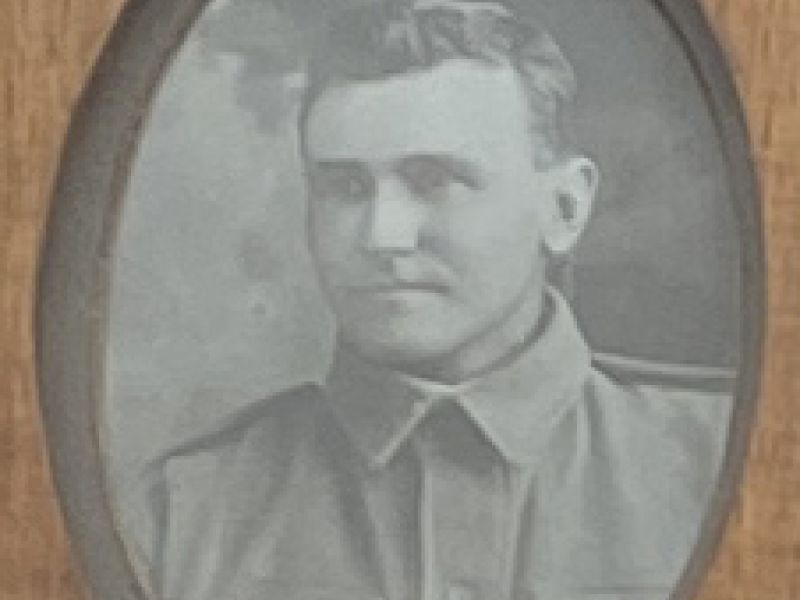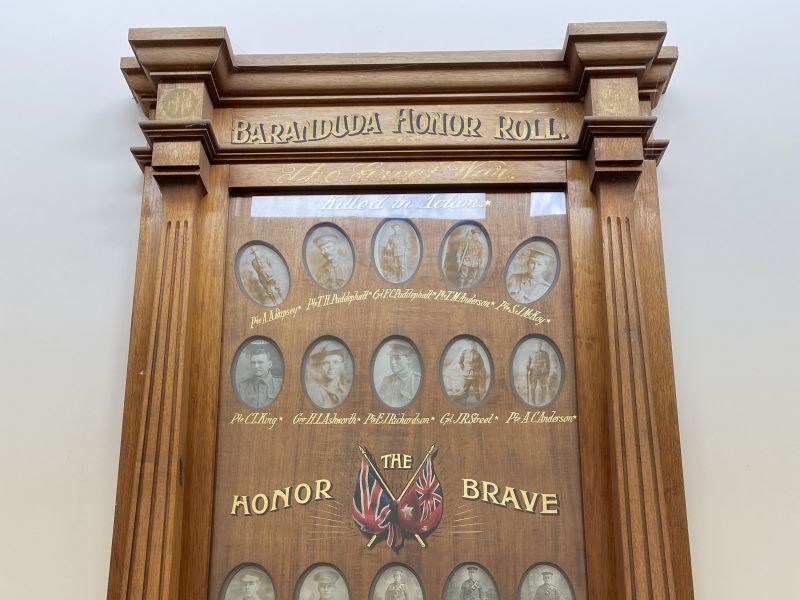Charles Leslie King
Charles was born around 1883 at Wodonga, Victoria. He was the youngest child of three for Charles Thomas William and Margaret (née Mason) King. Charles senior’s family had moved to the Bandiana area in the 1850’s where they ran the first hotel established in the new settlement on the Murray River.
Charles junior was generally known by his middle name. He grew up in and around Wodonga, attending the Barranduda State School during his early years. Charles senior became a station manager and worked for several properties on either side of the border. The family eventually settled in Wodonga where they were well known and respected. Leslie’s mother died when he was only eleven years old in 1894. Charles senior married Mary Emily Burrows the following year and they had another son, Basil, in 1899. Leslie and his older brother Albert, followed in their father’s line of work and managed stations, Albert at Koodarrie station and Leslie at Nunutarra, both in northern Western Australia.
In late January of 1915, Leslie enlisted in the 1st AIF at Perth in Western Australia. He was a single, 31 year-old, station overseer whose address at enlistment was Nunatarra Station near Onslow in New South Wales. He gave his next of kin as his elder sister Belle, who was now married and living ay 422 Swift Street in Albury.
He was allocated the Regimental Number 1830 and placed in the 4th Reinforcements for the 16th Battalion. After initial training the 4th Reinforcements embarked on HMAT A8 Argyllshire at Fremantle. As Charles was heading towards the Darndenelles, his father passed away at the age of 73.
Leslie arrived on the Island of Lemnos in the Aegean. Several weeks later he wrote a letter home which spoke of a great many ships and troops arriving there every day. He was pleased that he had the opportunity to have seen some places of interest in Egypt
There is very little information in Leslie’s’ Form B103, which normally lists all of the person’s movements, illnesses and promotions. On Charles there are two hand written sentences. The first, clearly added after the second as it was written in red above the line, states that he was taken on strength with the 16th Battalion at Gallipoli on the 2nd of June, 1915. The second statement simply says “Killed in Action” on the 10th of August, 1915, eight weeks after his arrival on the Peninsula.
The 4th Brigade was given the task to capture the ground behind Hill 971, the highest point on the Sari Bair range, and Chunuk Bair. They moved out late on the night of the 6th of August but progress was slow. They began to dig in on the ridge below the objective. Although ordered to pass on the next day, the advance fell into chaos and most men lost their bearings. Another push was odreder for the 8th of August but it met with such a withering fire from the Turkish guns that it too was stopped.
On the 10th of August the Turks counter-attacked. The 16th battalion helped to stop the Turks from breaking through the ANZAC lines. However the Anzac trenches were not well sighted and men were exposed to enemy fire. It’s not known whether Leslie was killed by a sniper’s bullet or one from a machine gun but he was listed as those killed in action on that day. It’s also not known whether his remains were recovered and buried.
Leslie has no known grave. He is remembered on the Australian War Memorial Roll of Honour, the Barranduda Pictorial Honor Roll, the Lone Pine Memorial to the Missing and the Onslow Ashburton District Roll of Honour. For his service during the war he was awarded the 1914-1915 Star, the British War Medal, and the Victory Medal.

 Stephen Learmonth
Stephen Learmonth